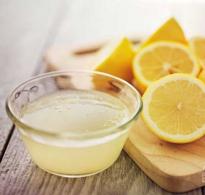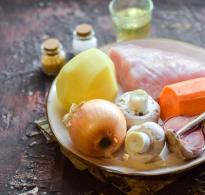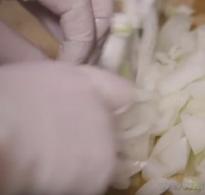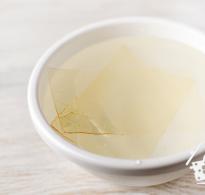How healthy are frozen vegetables? Where are vitamins stored?
Today it seems to us that frozen foods have always been in stores. But this is a misconception. The first assortment of frozen vegetables arrived in Russia around the period of the collapse of the USSR and it was simple - frozen peppers, tomatoes, onions. Now we can easily find popular food in supermarkets. Hawaiian mixture, Chinese mixed rice with shrimp and vegetables and even Spanish paella! But the question arises - in winter period Are frozen vegetables healthier than fresh ones?
Vegetable mixture - and it's done!
Why are mixed vegetables so popular among Russians? The fact is that our women love “fast” food. Why spend hours preparing a dish when you can quickly mix everything you have on hand. This is how pizza, vinaigrette, solyanka, okroshka, and pilaf once appeared. And you can easily use frozen vegetable mixtures in these dishes.
 Subsequently, these products won recognition and people's love. They were easy to prepare, inexpensive and tasty. And in the absence of the necessary ingredient, it could easily be replaced with the one that was at hand. This made the food varied and helped find the most delicious food combinations.
Subsequently, these products won recognition and people's love. They were easy to prepare, inexpensive and tasty. And in the absence of the necessary ingredient, it could easily be replaced with the one that was at hand. This made the food varied and helped find the most delicious food combinations.
Vegetable mixes tasty, healthy and allow you to experiment. For those who like a hearty lunch, mixed vegetables are an excellent side dish for the main course. For vegetarians and vegetarians healthy eating- tasty and healthy dish. Experimenters not only fry or boil them, but also make original hot dishes or cold salads based on them. Even capricious children liked the vegetable mixtures. Multi-colored side dishes are tastier than regular buckwheat or potatoes and are more interesting to eat.
However, can we be calm about the health of our loved ones? Are vegetable mixtures really extremely healthy, rich in vitamins and microelements?
Which is better - fresh or frozen?
Researchers from the Austrian Consumer Society compared nutritional value frozen and fresh vegetables, imported in winter from Italy, Turkey, Spain and Israel. Vitamin content in  frozen peas, cauliflower, beans, corn and carrots were higher than those of imported fresh vegetables. It should be remembered that fresh vegetables available in winter in stores, are most often imported from southern Europe or northern Africa and contain much lower amounts of vitamins and minerals than local vegetables in season.
frozen peas, cauliflower, beans, corn and carrots were higher than those of imported fresh vegetables. It should be remembered that fresh vegetables available in winter in stores, are most often imported from southern Europe or northern Africa and contain much lower amounts of vitamins and minerals than local vegetables in season.
The results of such studies serve as the basis for the development of dietary recommendations. Thus, in the UK, frozen and canned vegetables and fruits are included in the set of products that are recommended to be consumed daily in winter.
In terms of nutritional value and the content of water-soluble vitamins, quick-frozen vegetables are practically not inferior to fresh ones. Freezing leads to a slight decrease in the initial level of only vitamin C - ascorbic acid. The content of vitamins B1 and B2 in frozen foods does not change.
How to defrost vegetables and berries correctly?
 You need to defrost vegetables and fruits as quickly as possible. You can use a microwave oven for this. If you are going to use berries and fruits as a filling, you don’t need to defrost them at all. The same can be recommended if you intend to boil or fry frozen foods. In addition, remember the following rule: the less water you cook vegetables in, the more vitamins and microelements they retain.
You need to defrost vegetables and fruits as quickly as possible. You can use a microwave oven for this. If you are going to use berries and fruits as a filling, you don’t need to defrost them at all. The same can be recommended if you intend to boil or fry frozen foods. In addition, remember the following rule: the less water you cook vegetables in, the more vitamins and microelements they retain.
Fry or steam?
remember, that the nutritional value and quality of finished vegetable dishes are significantly reduced during storage and especially when reheated. During storage, the vitamin C content decreases, and when dishes are heated, it is completely destroyed. Therefore, the shelf life of ready-made vegetable dishes should be no more than 3 hours, and potato dishes – no more than an hour. Prepare vegetables for one-time use only.
There is one more remarkable subtlety in this matter - the finer the vegetables are cut, the more vitamins they lose. Salt the vegetables 5-10 minutes before the end of cooking: this will preserve more minerals.
And one more thing: in boiled vegetables more vitamins remain than in fried ones.
So, those who haven’t yet had time to get one, buy steamers and absorb vitamins and minerals!
Comments
|
|||||||
|
|
The gifts of the garden are a traditional source of vitamins in the summer, but in winter they are not always available and not to everyone - if only because they become much more expensive. So the demand for deep-frozen vegetables and fruits is soaring: according to statistics, by 2-3 times!
“Freezing” has both supporters and opponents. The main questions that buyers ask: are frozen fruits and vegetables healthy? Can they be considered a full replacement for their fresh “brothers”? Who needs them and how to choose the right quality product?
Let's try to find answers.
Fresh vs frozen
Opponents of all kinds of preservatives say: fresh gifts from the garden cannot be compared with frozen ones. They are right, but only about freshly picked fruits or vegetables. The most healthy vegetables- from my native garden! And those from the store are, strictly speaking, no longer “first fresh”. Temperature, humidity, transportation - all this affects products much more detrimentally than deep freezing.
The freshness of fruits and vegetables is usually determined by the percentage of vitamin C. This essential vitamin is especially fragile - a couple of days of storage, and its presence in the product becomes negligible. So, 2 days after harvest, spinach loses 75% of vitamin C, asparagus and broccoli - up to 80%.
Today deep freezing is the only 100% natural way food preservation: only it allows you to preserve both the taste and (more importantly) the structure of the original product. The time required to collect vegetables and freeze them is minimal - as a result, you get a truly healthy product.
How does freezing occur?
When using the method of quick freezing of a product, the main point is to reduce the temperature from the surface inwards. At a certain point, the water/juice contained in the product turns into tiny ice crystals. Deep freezing technology allows you to very quickly bring the temperature inside the product to the required -18. This temperature is the same at all stages of the process - as a result, the finest homogeneous crystals are formed in the cellular tissues of the fruit or vegetable, which do not cause any changes in structure vegetable fibers. The higher the freezing rate, the less the fibers suffer. A fruit or vegetable retains all its inherent properties, hardly differing from “fresh from the garden” in its nutritional value.
If the freezing process took a long time, the crystals would grow - as a result, the fruit or vegetable is partially dehydrated and the walls of the cell membranes are destroyed. Such a product is no good after defrosting. By the way, for the same reason you cannot defrost fruits and vegetables before cooking.
So, if you see the inscription “Instant freezing” on the package, buy it with confidence!
Fresh fruits and vegetables can be classified as seasonal products: It is better to eat them during the period when the harvest is harvested. It is then that they are frozen - that is, a person who in February-March chose “fresh” carrots between frozen and fresh will receive... less vitamins.
There is another point that opponents of “freezing” focus on – its higher price compared to a fresh product. In absolute terms, this is most likely true – especially in summer and autumn. But in relative terms, “freezing” is more profitable: it is peeled (no seed cuttings for you), washed and cut into pieces. There are savings in both money and time.
There is an opinion that dyes are added to vegetables and fruits when frozen. The fact is that before freezing, vegetables are “shocked” with boiling water or 100-degree steam in order to keep them unchanged. nutrients and "commit" natural color product - for example, green vegetables like okra from the effects high temperature chlorophyll will become even greener, and orange ones, like carrots (containing carotene), will become redder.
As you can see, frozen vegetables and fruits retain almost all the beneficial properties of fresh ones. So thanks " cold technology“The gifts of hot summer are always available to us.
Who needs this?
1. City dwellers who do not have a dacha. They don’t get enough vitamins in the summer, and in the winter...
2. People on a diet. 5-7 minutes – and the healthy dish is ready!
3. Infants and also elderly people. Their immune systems weak; This means that fruits and vegetables, carefully processed before freezing, are just what you need.
4. For those who don’t like fussing around in the kitchen, or who always don’t have enough time: young mothers, businessmen, students and simply those who don’t like cooking...
5. ...and, paradoxically, for those who love culinary experiments! Vegetable mixtures can be added to soup, rice, potatoes, and meat dishes– you can’t list all the variations!
How to choose
1. When studying the colorful “conjuncture” in the supermarket, it is better to give preference famous brands. Serious, conscientious manufacturer strictly controls raw materials, using only high-quality fruits and vegetables without flaws.
2. Take the time to read the packaging - it indicates the method and time of preparation, as well as the shelf life of the product.
If stored properly, frozen fruits and vegetables can retain their beneficial properties even longer than the deadline indicated on the packaging. However, the date is worth looking at.
If you're concerned about GMIs, look for the label on the packaging that says, "Does not contain genetically modified ingredients." If there is none, remember the manufacturer and do not buy products from his “line”.
3. Pay attention to the freezing method: “quick-frozen” products – the best choice. Sometimes the manufacturer writes on the packaging: “shock freezing method,” and this is also good.
4. Rate the quality of the content:
"by eye": the packaging must be intact, without external damage (tears, scratches, etc.). Is the packaging covered in frost? Warning sign: The product may have been stored above the specified temperature for some time. It is better to put such packaging aside;
manually: Let's say the packaging looks perfect. Shake it and then feel it with your hands. Do you feel frozen lumps? This means that the product was thawed and then frozen again. As we already know, repeated freezing is destructive - such packaging cannot be taken.
5. If possible, pay attention to the temperature sensor on the refrigerator: it should show -18 or slightly lower. This will give you an additional guarantee of the quality of the product.
So, when reasonable approach Frozen fruits and vegetables will bring you both benefit and pleasure - maybe less than their fresh “brothers”, but vitamins are definitely guaranteed. As well as saving time... and a whole field for experimentation in the kitchen!
Frozen foods in a fairly wide range appeared in our supermarkets relatively recently. And very soon they caused a lot of controversy around them.
Source: frozen_summer_ua
Frozen foods were initially perceived as a panacea for vitamin deficiency and winter deficiency. plant foods diet. Then information appeared “exactly the opposite.” Let's try to find the truth.
Myth No. 1
Frozen vegetables and fruits contain less vitamins than fresh ones
Of course, there is always a loss of vitamins in frozen foods. But this conversation should not be general, but private. That is, you always need to understand what kind of vitamin we are talking about. If we are talking about vitamin C, then yes, it is lost. The amount of loss depends on the conditions of freezing, storage and thawing.
Home freezing is the most destructive. Industrial allows you to preserve most of the vitamin C, 75% of vitamin B1 (thiamine), from 80 to 95% of vitamin B2, vitamin A does not disappear due to freezing, but is lost during long-term storage, look at the date of manufacture of the product.

Myth No. 2
Frozen foods are not dangerous in terms of infections
Almost all bacteria and viruses retain their viability at low temperatures. Therefore, you should not count on the fact that all pathogenic microorganisms in the freezer have died. Industrial procurement rules provide for scalding of products, but this is not a guarantee of infectious purity.
Therefore, all frozen fruits and vegetables, at least those intended for a child, must be thermally processed. This is again a loss of vitamins. But the “villains” from the soil are a greater evil.
Myth No. 3
Frozen meat and fish are good!
No, this is just bad. It is these products that provide wide scope for the use of various technologies that are not beneficial to the body. This is, first of all, nutritional supplements, flavor enhancers, stabilizers and flavorings. Plus pieces of ice that are found on the surface of fish carcasses, inside them - for weight. It's a shame to pay for frozen food clean water, both sea fish, Truth?

There is no and cannot be an unambiguous answer to this, but not due to ignorance: the issue is the responsibility of manufacturers and sellers. There is a belief that some foods are removed from grocery aisle displays on the last day of their expiration date and frozen. It is not possible to verify this fact; it is only possible to catch the wicked employees by the hand.
Another fraud of distributors is freezing vegetables, berries, fish and meat in water; mushrooms especially suffer from this. The thawed product sometimes weighs 3-4 times less than indicated on the package. But let's forget about those who just want to make money from buyers - we are all already experienced enough to know trusted sellers and honest manufacturers.
Let’s better understand the very essence of the question: are there any undeniable advantages of fresh products over “freezing”? After all, this available sources essential elements for any fitness menu.
Vegetables
During transportation, storage and ripening on store shelves, vegetables and fruits lose some of their vitamins and other nutrients. Frozen versions do not have this drawback, so everything that grows and has been frozen sometimes turns out to be healthier than “fresh” products.
Of course, in a pack Brussels sprouts There may also be damaged copies; it is impossible to check this before opening the package. Therefore, a reference to the paragraph above: buy a proven brand. In the summer, of course, it is worth giving preference to local fresh vegetables and fruits, but in the winter you can’t go without “freezing”.
Fact: summer-picked and frozen vegetables will always be healthier than winter greenhouse vegetables, especially those that need to “ripen on the windowsill.” Probably everyone did this. Products collected in the summer, as a rule, are already mature and selected. In winter, there are a lot of imported vegetables and especially fruits on the shelves, despite the fact that they are called fresh, they are collected in an unripe form - however, everyone already knows about this, we just decided to remind you.
Cold is the best known preservative; at temperatures down to -40°C, vegetables, berries and fruits are exposed to water or air. Such a sharp freezing does not destroy the cells of the food, since the water in them does not have time to form large ice crystals. Shock freezing occurs at still low temperatures: below -60°C. As a result, everything useful material(and useless ones too) do not crumble into pieces, but remain intact down to the molecular level. Just like in "Terminator".

The most important thing is to prevent re-freezing; vegetables should reach you as if from a cryogenic chamber. The juice and melt water inside the package will tell you that the products have already melted once and slowly frozen again on the display case. It’s no longer worth putting such a package in the basket; the contents no longer contain the former vitamins and other useful substances.
How to prepare “freeze”? If these are vegetables, then it is best to add a little water and steam them, this way you will retain all the vitamins as much as possible. You also need to simmer with the addition of water; frying will provide as much benefit as fresh vegetables - that is, not much. Of course, all processes for preserving vegetables by cold partially destroy vitamins C and B, but they are already destroyed during cooking - you should not regret this, unless you are planning to eat the beans raw.
Fruits/berries for smoothies, baking, compotes, fruit water No need to defrost.
This way they will cook faster, which means they will be subject to minimal exposure to external factors, including high temperature.
Another big advantage of “freezing” is its cost-effectiveness. Only during the peak of the harvest, frozen vegetables and fruits are more expensive than fresh ones; during the rest of the year they are much more affordable. Even if they contain 10% less vitamins, the more important thing is that vegetables are still present in the diet in sufficient quantities.
Fish
At proper storage, shock freezing and the absence of secondary meat, the meat of any fish will be no different from freshly caught. Besides the taste. The same applies to other seafood: there is no harm to health, the benefits are exactly the same as fresh ones. It is clear that in fish meat great content liquid, so even with ultra-fast freezing, tissue deformation is inevitable, which leads to changes in texture during cooking.

Quality suppliers sometimes freeze fresh fish on the ship itself or immediately after delivery to shore. In the future, even if it is brought from Norway, it is not allowed to thaw at any stage, otherwise there is a high chance of spoilage, and this can be understood by the characteristic smell even from fish frozen in ice. Of course, no one will buy such a product; the quality of seafood is easy to determine by smell, so it is carefully monitored.

Thaw the fish shortly before cooking. As a rule, frozen fish will crumble into fibers - those that have lain in the freezer for too long at very low temperatures. At the same time, its benefits will not decrease; all the necessary fats, which is why fish is so loved in fitness, will be preserved. If the fish has spent no more than a couple of weeks in cryogenic sleep, its taste and texture will remain identical to freshly caught.
Meat
Not much different from fish: frozen meat is microbiologically stable throughout its shelf life. After defrosting, it retains its properties for another two days when stored in the refrigerator (up to +4 degrees) and is completely safe for consumption. But anyone who has cooked meat at least once knows about this, but what about the indicators of protein, fats and other useful things?

Nothing - during long-term frozen storage, meat retains all its organoleptic and structural characteristics, and the mass fractions of proteins and fats practically do not change, that is, the nutritional value remains stable. At the same time, the meat tolerates it well long-term storage: even the content of vitamins, whether after a week or a year of deep freezing, remains at the bottom level.
The most important thing that distinguishes meat from frozen vegetables, fruits, berries and even fish is that it is very difficult to determine visually whether the meat is chilled on the display case or defrosted. As we remember, the repeated freeze-thaw cycle affects not only taste characteristics, but also on chemical composition product.

Without laboratory research It is almost impossible to determine whether the meat is fresh or defrosted. But there are several visual methods that do not guarantee reliability, but bring them closer to it: defrosted meat is outwardly “dryer”, it contains less moisture, it is less elastic - that is, it is easily pressed and does not recover, and also has a less rich “meatiness” aroma, its smell is more muted.
Thus, frozen foods are hardly less beneficial than fresh ones. The only thing “freezing” cannot replace is seasonal vegetables. But winter in Russia is long, so fill out with confidence freezers vegetables to always have healthy and healthy dishes on the table!






